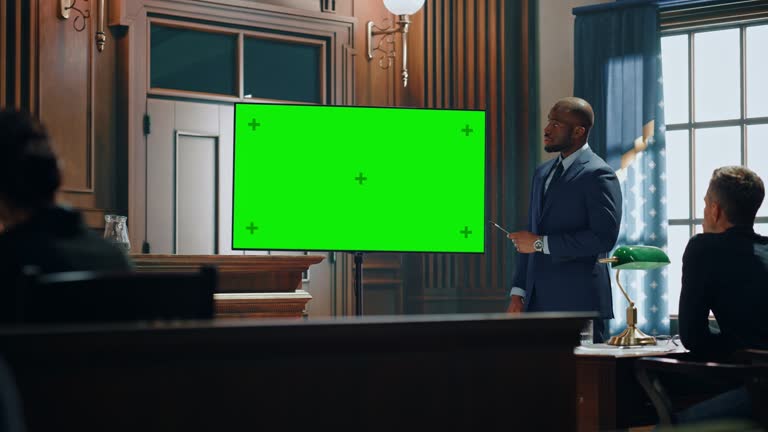Navigating Complex Cases: How to Develop Effective Trial Presentations for Optimal Results
Navigating Complex Cases: How to Develop Effective Trial Presentations for Optimal Results
Blog Article
Browsing the Complexities of Test Presentations: Tips for Seamless Shipment and Compelling Disagreements
In the realm of lawful procedures, the art of test presentation stands as a vital factor of success. The intricacies integral in test discussions require a delicate equilibrium of technique, skill, and ability.

Recognizing Trial Goals
To efficiently browse a test, it is crucial to have a clear understanding of the objectives that need to be achieved. Before entering the court room, lawful groups must define their objectives and desired results. These goals function as leading concepts throughout the test, forming strategies and influencing decision-making processes.
Understanding trial purposes includes a detailed evaluation of the situation, lawful precedents, and the customer's benefits. Trial Presentations. It calls for a thorough exam of the realities, recognizing essential problems, and expecting prospective difficulties. By setting measurable and specific objectives, lawyers can customize their disagreements and presentations to straighten with the wanted outcomes
Additionally, a clear understanding of trial objectives makes it possible for lawful teams to prioritize evidence, witnesses, and lawful disagreements efficiently. It enables the development of a systematic story that resonates with the discretionary, enhancing the overall instance presentation.

Organizing Proof Properly
Having a clear understanding of test goals lays the structure for organizing evidence successfully in legal process. By lining up the discussion of evidence with the desired results of the trial, lawful groups can enhance their arguments and improve their persuasiveness.
Another crucial element in arranging evidence properly is establishing a sensible flow. Offering evidence in a sequential and systematic manner can aid build an engaging story that supports the lawful arguments being made. In addition, using aesthetic help such as charts, graphs, or timelines can even more boost the organization of evidence and aid in clarifying complicated partnerships or sequences of events.
Moreover, ensuring that all evidence offered is appropriate and permissible to the case is necessary. Inadmissible or irrelevant evidence can interfere with the toughness of the debate and potentially harm the integrity of today party. A precise review and selection process ought to be carried out to include only the most legally sound and impactful proof in the test discussion.
Crafting Persuasive Stories
Crafting engaging narratives plays a pivotal duty in providing persuasive debates during lawful procedures. When constructing a story for a trial discussion, it my link is important to develop a clear storyline that highlights vital points and attaches them in a meaningful fashion. By weaving with each other evidence, testament, and legal debates into a natural and persuasive narrative, lawful professionals can successfully advocate for their customers and increase the probability of a beneficial end result in the courtroom.
Grasping Aesthetic Aids
Efficient usage of visual aids is vital to enhancing the effect and quality of trial presentations. Visual help, when utilized tactically, have the power to streamline complex info, enhance bottom lines, and leave an enduring impact on the judge and jury. To grasp aesthetic help in test discussions, it is important to make certain that they are clear, concise, and relevant to the disagreements being made.
When integrating aesthetic help, such as graphes, pictures, graphs, or timelines, into a trial presentation, it is necessary to maintain them aesthetically appealing yet specialist. The visuals need to complement the spoken arguments, providing a visual representation of the information being discussed without overwhelming the audience with unnecessary details.
Furthermore, experimenting the aesthetic help ahead of time is essential to guarantee a seamless delivery throughout the test. Acquainting oneself with the material, shifts, and timings of each aesthetic help can assist preserve the flow of the presentation and prevent technological problems that may occur.
Delivering Impactful Closing Arguments
An engaging closing debate functions as the culmination of a trial discussion, enveloping the core story and convincing the discretionary in the direction of a positive decision. To supply an impactful closing debate, it is vital to succinctly wrap up essential factors, highlight the staminas of your case, and address any kind of weak points in a calculated way. Begin by outlining the webpage major disagreements that sustain your customer's position, stressing why the evidence offered throughout the test sustains your narrative. It is crucial to produce a sense of communication and quality, directing the discretionary in the direction of the preferred conclusion.
In addition, incorporating psychological appeal can better reinforce your closing argument. Ultimately, a well-crafted closing disagreement ought to leave a long-term impact, engaging the court and court to rule in your client's support.
Conclusion
Finally, mastering test discussions entails recognizing purposes, arranging proof, crafting stories, using aesthetic aids, and providing impactful closing disagreements. By executing these methods successfully, attorneys can provide their situation seamlessly and make engaging debates in the court room. It is critical to browse the intricacies of trial presentations with accuracy and ability to accomplish success in legal procedures.
By lining up the presentation of proof with the wanted results of the trial, legal groups can enhance their disagreements and enhance their persuasiveness (Trial Presentations). To understand aesthetic aids in trial discussions, it is vital to guarantee that they are clear, concise, website here and pertinent to the disagreements being made
A compelling closing argument offers as the conclusion of a trial discussion, encapsulating the core story and convincing the judge and court towards a favorable choice. Begin by detailing the main debates that support your client's position, stressing why the evidence offered throughout the trial supports your story.In conclusion, understanding trial discussions involves recognizing goals, arranging evidence, crafting stories, using aesthetic aids, and supplying impactful closing disagreements.
Report this page